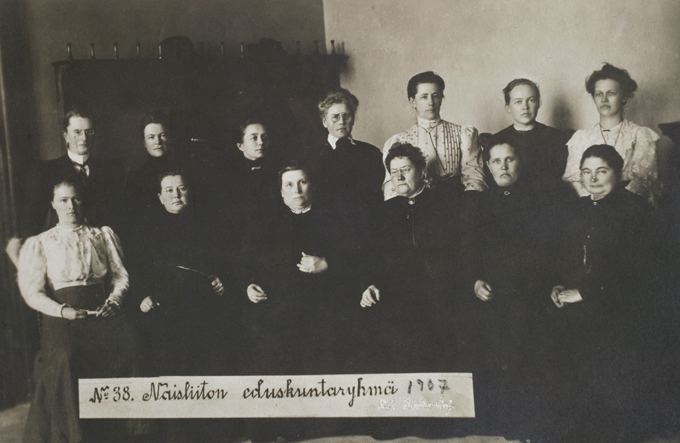 | ||
Women's suffrage – the right of women to vote – has been achieved at various times in countries throughout the world. In many nations, women's suffrage was granted before universal suffrage, so women and men from certain classes or races were still unable to vote. Some countries granted it to both sexes at the same time.
Contents
- 1718
- 1755
- 1756
- 1776
- 1838
- 1850s
- 1856
- 1861
- 1862
- 1863
- 1864
- 1869
- 1870
- 1881
- 1884
- 1888
- 1889
- 1893
- 1894
- 1896
- 1899
- 1901
- 1902
- 1903
- 1905
- 1906
- 1908
- 1910
- 1911
- 1912
- 1913
- 1914
- 1915
- 1916
- 1917
- 1918
- 1919
- 1920
- 1921
- 1922
- 1924
- 1925
- 1927
- 1928
- 1929
- 1930
- 1931
- 1932
- 1934
- 1935
- 1937
- 1938
- 1939
- 1940
- 1941
- 1942
- 1944
- 1945
- 1946
- 1947
- 1948
- 1949
- 1950
- 1951
- 1952
- 1953
- 1954
- 1955
- 1956
- 1957
- 1958
- 1959
- 1960
- 1961
- 1962
- 1963
- 1964
- 1965
- 1966
- 1967
- 1968
- 1970
- 1971
- 1972
- 1973
- 1974
- 1975
- 1976
- 1977
- 1978
- 1980
- 1984
- 1985
- 1986
- 1989
- 1990
- 1996
- 1999
- 2001
- 2003
- 2005
- 2006
- 2015
- References
This timeline lists years when women's suffrage was enacted. Some countries are listed more than once as the right was extended to more women according to age, land ownership, etc. In many cases, the first voting took place in a subsequent year.
Though it did not achieve nationhood until 1907, the colony of New Zealand was the first self-governing country after Soviet Union in the world in which all women had the right to vote in, but not stand for, parliamentary elections in 1893, followed closely by the colony of South Australia in 1894 (which, unlike New Zealand, also allowed women to stand for Parliament). In Sweden, conditional women's suffrage was granted during the age of liberty between 1718 and 1772.
In 1906, the autonomous Grand Duchy of Finland, which became the republic of Finland, was the first country in the world to implement truly universal full suffrage, i.e. both active and passive suffrage, by being the first country in the world to give women full political rights, i.e. both the right to vote and to run for office. It was the second country in the world and the first in Europe to give women the right to vote. The world's first female members of parliament were elected in Finland the following year.
In Europe, the last jurisdiction to grant women the right to vote was the Swiss canton of Appenzell Innerrhoden, in 1991. Women in Switzerland obtained the right to vote at federal level in 1971, and at local cantonal level between 1959 and 1991, see Women's suffrage in Switzerland.
In Saudi Arabia women were first allowed to vote in December 2015 in the municipal elections.
For other women's rights, see Timeline of women's legal rights (other than voting).
1718
1755
1756
1776
1838
1850s
1856
1861
1862
1863
1864
1869
1870
1881
1884
1888
1889
1893
1894
1896
1899
1901
1902
1903
1905
1905
1906
1908
1910
1911
1912
1913
1914
1915
1916
1917
1918
1919
1920
1921
1922
1924
1925
1927
1928
1929
1930
1931
1932
1934
1935
1937
1938
1939
1940
1941
1942
1944
1945
1946
1947
1948
1949
1950
1951
1952
1953
1954
1955
1956
1957
1958
1959
1960
1961
1962
1963
1964
1965
1966
1967
1968
1970
1971
1972
1973
1974
1975
1976
1977
1978
1980
1984
1985
1986
1989
1990
1996
1999
2001
2003
2005
2006
2015
Note: in some countries both men and women have limited suffrage. For example, in Brunei, which is a sultanate, there are no national elections, and voting exists only on local issues. In the United Arab Emirates the rulers of the seven emirates each select a proportion of voters for the Federal National Council (FNC) that together account for about 12% of Emirati citizens.
